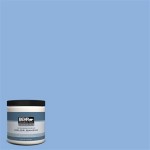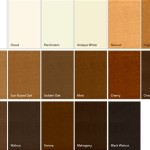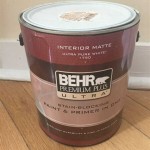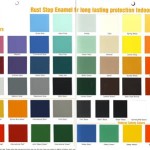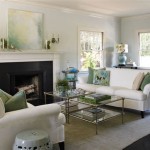Popular Colors To Paint Inside Of House
Selecting the right interior paint colors for a house is a multifaceted decision influencing the aesthetic appeal, perceived spaciousness, and overall atmosphere of a home. Color trends evolve, and understanding current preferences, alongside the enduring appeal of classic choices, is crucial for homeowners seeking to update their living spaces or embark on a new design project. This article explores popular interior paint colors, providing insights into their characteristics, suitability for different rooms, and potential impacts on the home environment.
The psychology of color plays a significant role in determining the impact of interior paint. Different hues can evoke various emotions and sensations. Warm colors, such as reds, oranges, and yellows, tend to create a sense of energy, warmth, and intimacy. Cool colors, including blues, greens, and purples, are often associated with tranquility, calmness, and spaciousness. Neutral colors, like whites, grays, and beiges, offer versatility and can serve as a backdrop for other design elements, allowing for flexibility in decorating.
Neutral Colors: Timeless Versatility
Neutral colors consistently rank among the most popular choices for interior paint, owing to their adaptability and ability to complement a wide range of decorating styles. Within the neutral palette, variations in undertones and shades provide designers and homeowners with ample options to create personalized spaces.
White, the quintessential neutral, is prized for its crispness, brightness, and ability to make rooms appear larger. It reflects light effectively, enhancing the illumination of a space. However, white is not a monolithic color; it encompasses a spectrum of shades, ranging from warm whites with yellow or cream undertones to cool whites with blue or gray undertones. Warm whites create a cozy and inviting atmosphere, while cool whites offer a more modern and minimalist aesthetic. Off-whites, like ivory and bone, provide a softer alternative, adding subtle warmth without the starkness of pure white.
Gray has emerged as a dominant neutral in recent years, offering a sophisticated and contemporary alternative to beige. Similar to white, gray exists in a multitude of shades, from light and airy grays to deep and dramatic charcoal grays. Light grays can create a serene and calming environment, while darker grays add depth and visual interest. Gray's versatility extends to pairing with various accent colors, making it a popular choice for both walls and trim. The undertones of gray are particularly important to consider as they can influence its overall appearance. Grays with warm undertones (e.g., greige) tend to feel more inviting, while those with cool undertones evoke a more modern and industrial vibe.
Beige, a classic neutral, has endured in popularity due to its warmth and understated elegance. While sometimes perceived as outdated, beige remains a versatile option for creating a comfortable and inviting atmosphere. It works particularly well in spaces where a sense of tradition and coziness is desired. Lighter beiges can create a bright and airy feel, while darker beiges offer a sense of groundedness and sophistication. Like other neutrals, beige's undertones play a significant role in its appearance, with some beiges leaning towards yellow or pink, while others have more brown or gray undertones.
Cool Colors: Tranquility and Sophistication
Cool colors, encompassing blues, greens, and purples, often evoke feelings of calmness, peace, and tranquility. These colors are well-suited for bedrooms, bathrooms, and other spaces where relaxation is paramount. The specific shade and intensity of a cool color can significantly impact the atmosphere of a room.
Blue, a universally popular color, is associated with the sky and the ocean, often creating a sense of serenity and spaciousness. Light blues, such as sky blue and pale aqua, can make rooms feel larger and airier. Deeper blues, like navy and royal blue, offer a more dramatic and sophisticated look. Blue is a versatile color that can be used in a variety of rooms. In bedrooms, it promotes relaxation and sleep. In living rooms, it can create a calming and inviting atmosphere. In bathrooms, it evokes a sense of cleanliness and freshness.
Green, the color of nature, is often associated with balance, harmony, and renewal. It is a versatile color that can be used in a variety of rooms, from living rooms to kitchens to bedrooms. Light greens, such as mint green and sage green, can create a fresh and airy feel. Deeper greens, like forest green and emerald green, offer a more sophisticated and grounding aesthetic. Green pairs well with a variety of other colors, including neutrals, blues, and yellows. In living rooms, it can create a calming and inviting atmosphere. In kitchens, it can bring a touch of nature indoors. In bedrooms, it promotes relaxation and tranquility.
Purple, a color often associated with royalty, creativity, and spirituality, can add a touch of elegance and drama to interior spaces. Lighter purples, such as lavender and lilac, are soft and romantic, creating a calming and serene atmosphere. Deeper purples, like eggplant and plum, are more dramatic and sophisticated, adding depth and visual interest to a room. Purple works well in bedrooms, living rooms, and dining rooms, creating a sense of luxury and refinement. It pairs well with neutrals, such as grays and creams, as well as with metallics, such as gold and silver.
Warm Colors: Energy and Intimacy
Warm colors, including reds, oranges, and yellows, are known for their ability to create a sense of energy, warmth, and intimacy. These colors are often used in living rooms, dining rooms, and kitchens, where a sense of activity and sociability is desired. However, warm colors can also be overwhelming if used excessively, so it is important to use them judiciously.
Red, a powerful and passionate color, is associated with energy, excitement, and boldness. It is often used as an accent color to add pops of vibrancy to a room. In larger doses, red can be overwhelming, so it is important to use it sparingly. Deep reds, such as burgundy and crimson, can create a sense of drama and sophistication, while lighter reds, such as coral and rose, are more playful and inviting. Red works well in dining rooms, where it can stimulate appetite and conversation. It can also be used in living rooms to create a sense of warmth and intimacy.
Orange, a cheerful and optimistic color, is associated with energy, creativity, and enthusiasm. It is a warm and inviting color that can add a sense of playfulness to a room. Light oranges, such as peach and apricot, are soft and soothing, while deeper oranges, such as burnt orange and terracotta, are more grounding and earthy. Orange works well in kitchens, where it can stimulate appetite and energy. It can also be used in living rooms and playrooms to create a fun and inviting atmosphere.
Yellow, a bright and cheerful color, is associated with happiness, optimism, and energy. It reflects light effectively, making rooms feel brighter and more spacious. Light yellows, such as lemon yellow and pastel yellow, are soft and airy, while deeper yellows, such as golden yellow and mustard yellow, are more grounding and warming. Yellow works well in kitchens, where it can create a sense of energy and optimism. It can also be used in living rooms, hallways, and nurseries to create a cheerful and inviting atmosphere.
The selection of interior paint colors involves considering the room's purpose, natural lighting, existing furnishings, and personal preferences. Testing paint samples in the actual space is recommended before committing to a full-scale application, as colors can appear differently under varying lighting conditions. The interplay of color, texture, and lighting contributes to the overall aesthetic and ambiance of a home, making the paint color selection a crucial aspect of interior design.

The 5 Best Interior Paint Colors For Feeling Refreshed And Relaxed Metzler Home Builders

Best Interior Paint Colors Whole House Color Scheme Abby Organizes

Lake House Interior Colors The Lilypad Cottage

How To Pick The Best Paint Colors For Your Whole House Lantern Lane Designs

The Best Fresh Warm Neutral Paint Colors For Your Home Perfecting Places

51 Best Bedroom Paint Color Ideas For 2024

Choosing Interior Exterior Paint Colors Kings Tucson

Top Colors For Home Interior Painting To Paint

2025 Color Collection Of The Year Home By Sherwin Williams

14 Popular Paint Colors For Small Rooms Life At Home Trulia Blog
Related Posts

